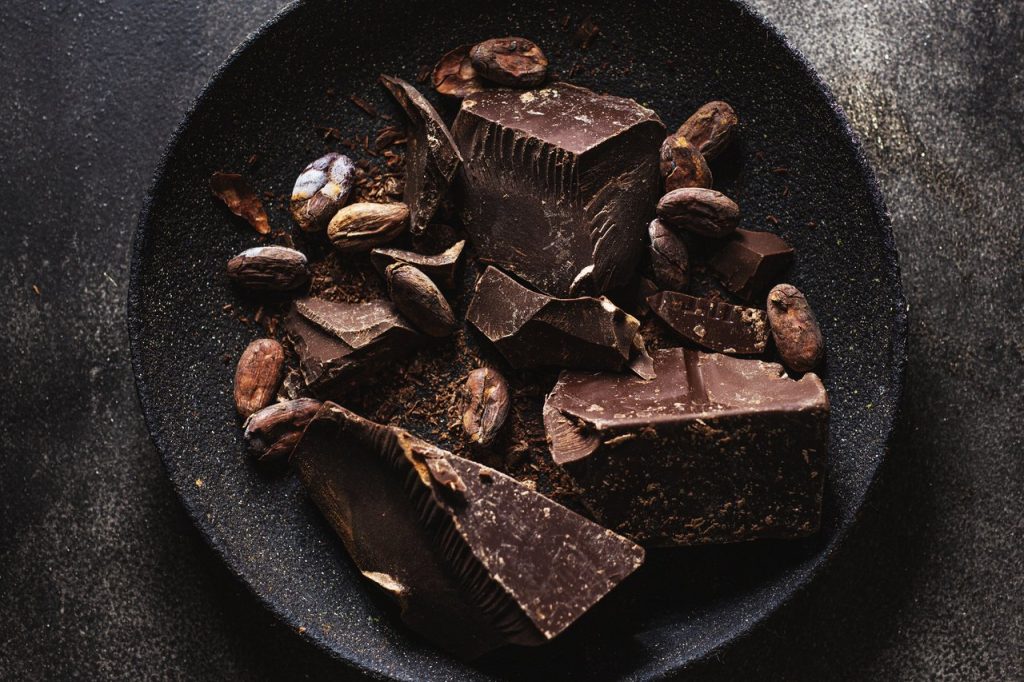I bet you’re thinking it’s pretty obvious what the differences are between milk and dark chocolate. Most people have their firm favourite. It’s usually milk or dark. Rarely both. So why is this? And what makes a chocolate classified as dark or milk?

Textural differences
The textural differences are plain for all to taste and feel. Milk chocolate is lighter, smoother and creamier due to the inclusion of milk powder. The cocoa flavour is more pronounced in dark chocolate, and the mouth feel often not as smooth. Those that like a sweeter, smoother chocolate generally head for the milk chocolate.
Cocoa percentages
There are no official classifications of milk and dark chocolate, however usually chocolate with 10-50% cocoa is classified as milk chocolate and over 50% is dark. White chocolate mainly has less than 10% cocoa. So, what does that actually mean? A chocolate bar that is 45% for example, is 45% refined cocoa beans, and the remaining 55% is all the other ingredients. Usually things like sugar, flavours, inclusions (such as nuts), vanilla. So the higher the cocoa percentage, the less additions are put into the bar.
The cocoa percentage includes both cocoa solids and cocoa butter. To add a little more complexity, within the cocoa percentage it depends how much is cocoa solids and how much is cocoa butter as to how fast the chocolate melts, how smooth it is, and how creamy it tastes. That 45% cocoa bar might be 20% cocoa solids, 25% cocoa butter. Or 10% cocoa solids, 35% cocoa butter – which would make an incredibly creamy and somewhat cloying chocolate.
This explains why some dark chocolates seem to be much smoother and creamier than others. If you had a 70% cocoa bar that was much higher on cocoa butter than cocoa solids, you’ll get a lovely smooth texture. When a dark chocolate tastes rather gritty or ‘dirty’, it’s because it’s very high on the cocoa solids.
Health benefits
We often hear about the health benefits of dark chocolate. This is purely around the minerals and antioxidants found in cacao. Dark chocolate is simply healthier because it has a higher level of cocoa containing this good stuff, and it generally also has less sugar.
At Curatorial: Chocolates we love our bean to bar producers such as Metiisto, Elements Chocolate Co., Ratio Cocoa Roasters, Daintree Estates, Birdsnake and Federation Artisan Chocolate. Most bean to bar chocolate will have great depth and complexity to its flavour profiles due to the different roasting and preparation processes, higher cocoa content, and less sugar. So often even a milk bean to bar creation will be healthier than the commercial ‘confectionery’ style chocolate.
